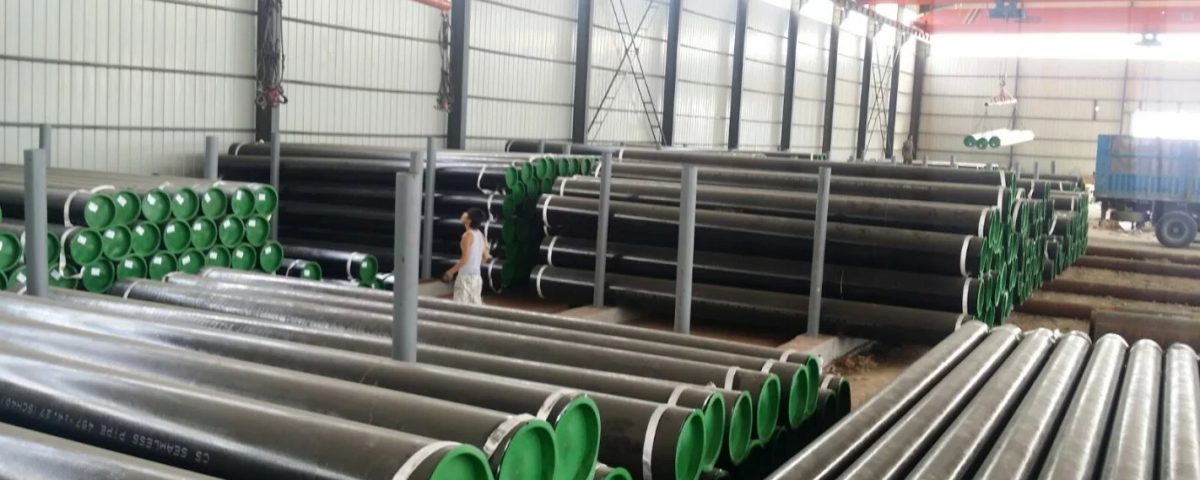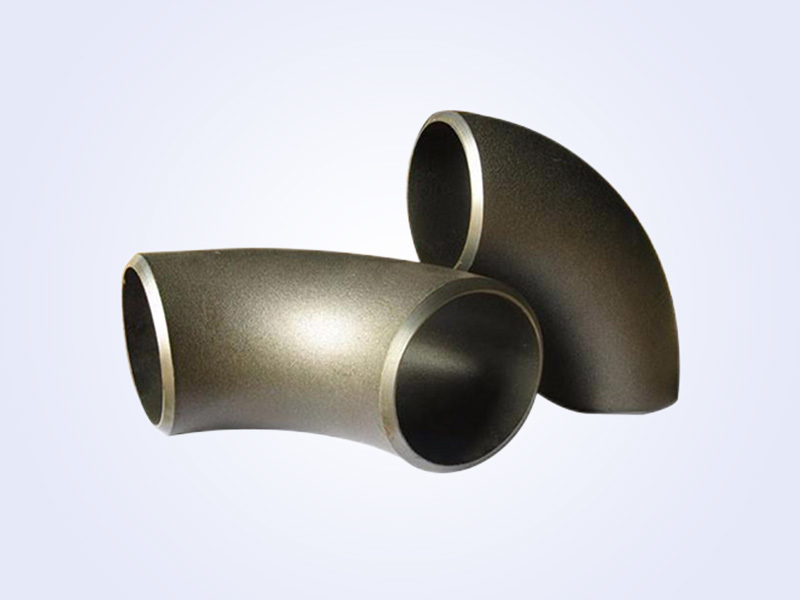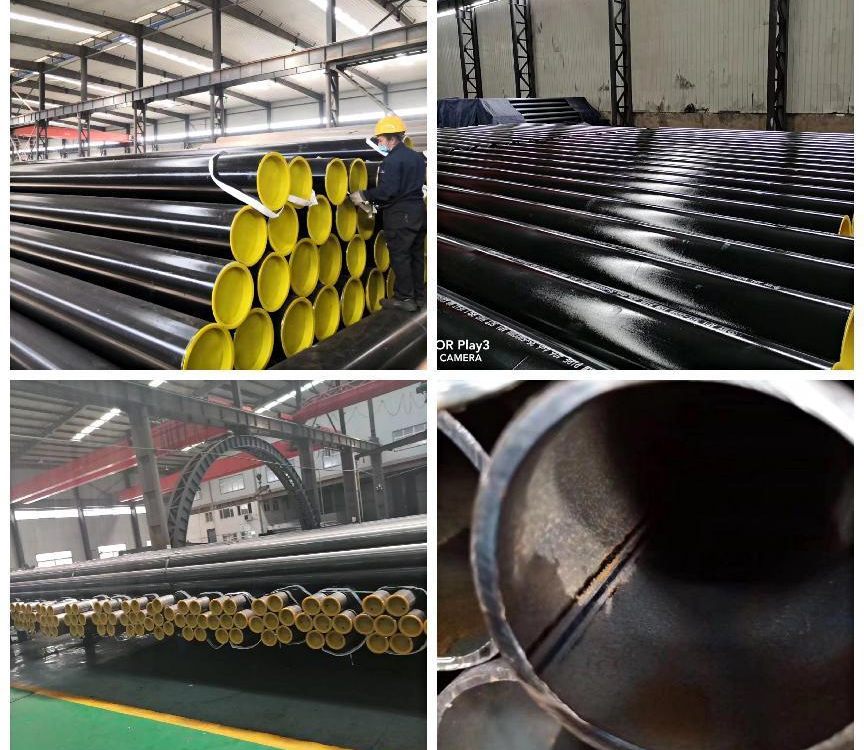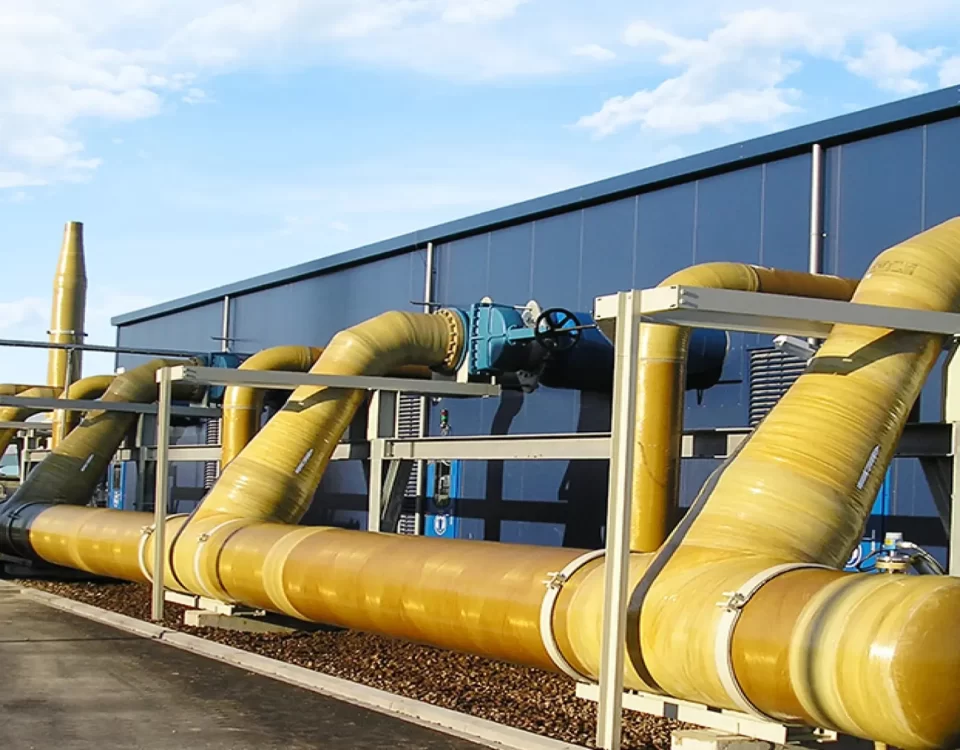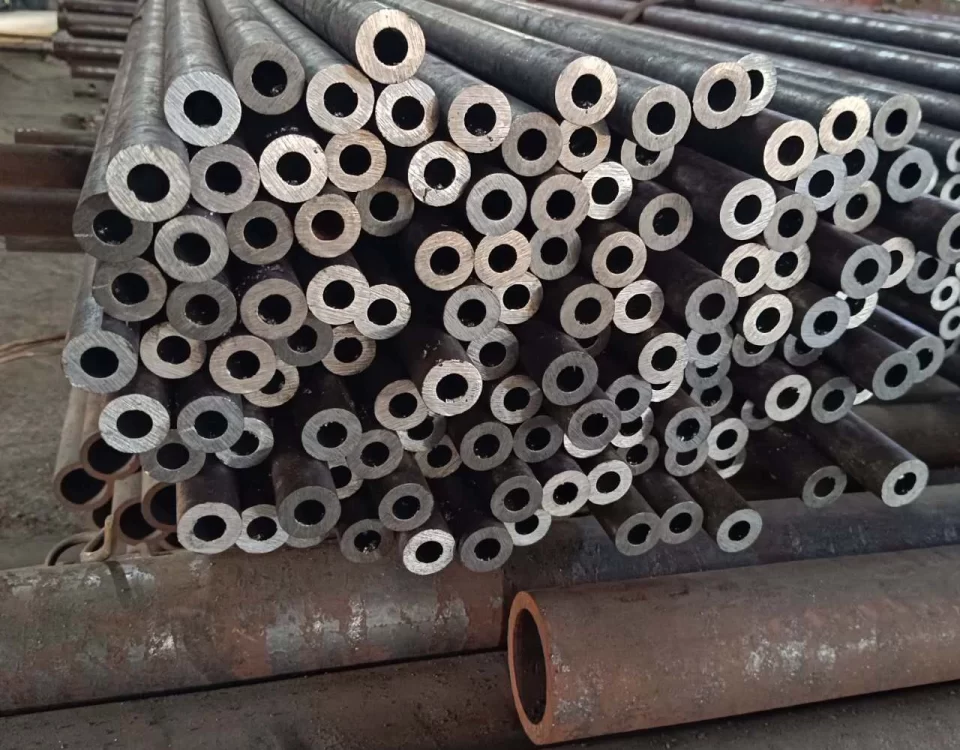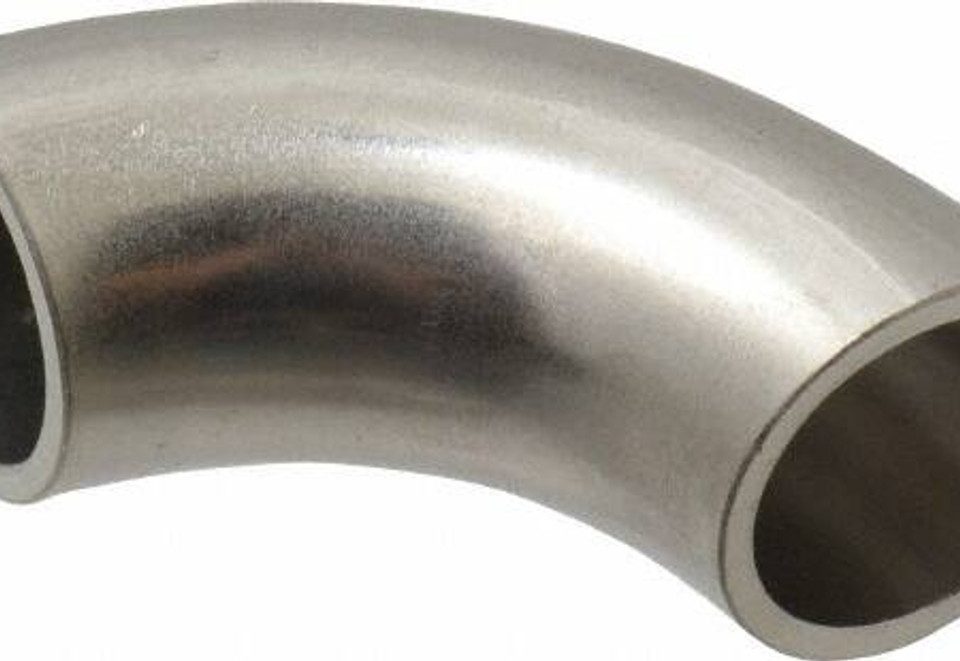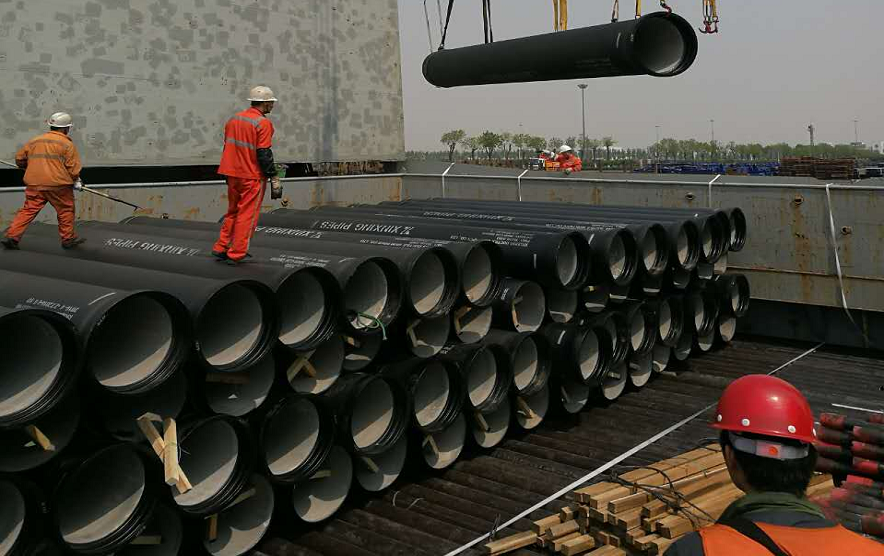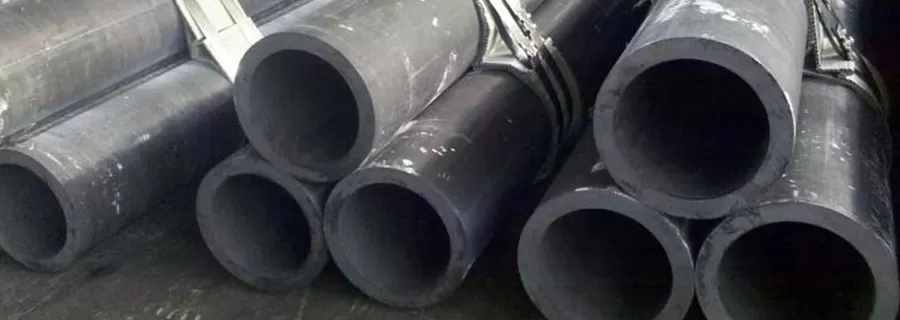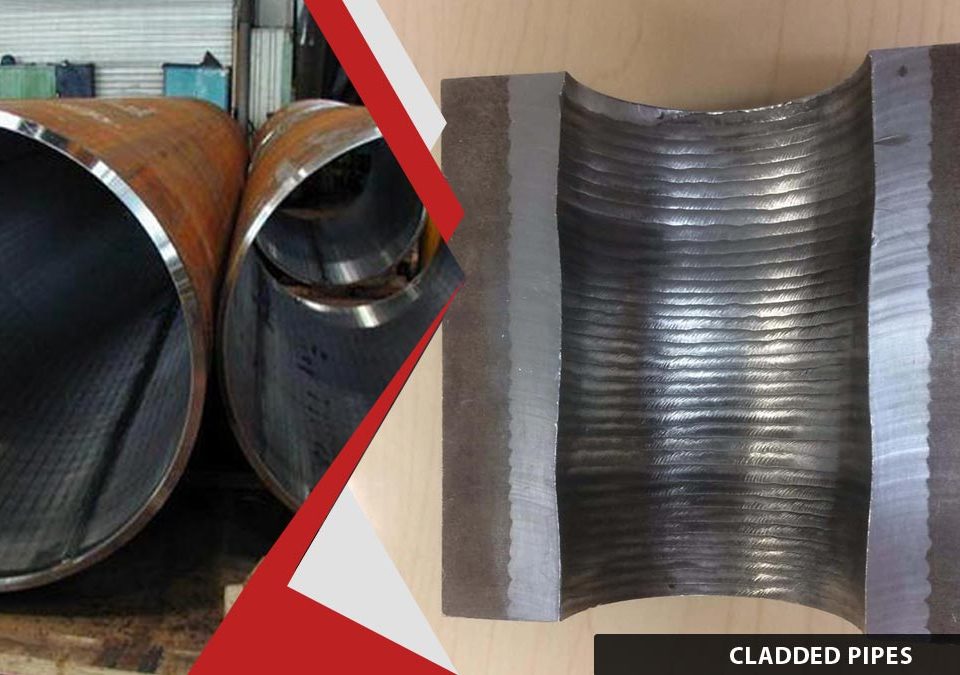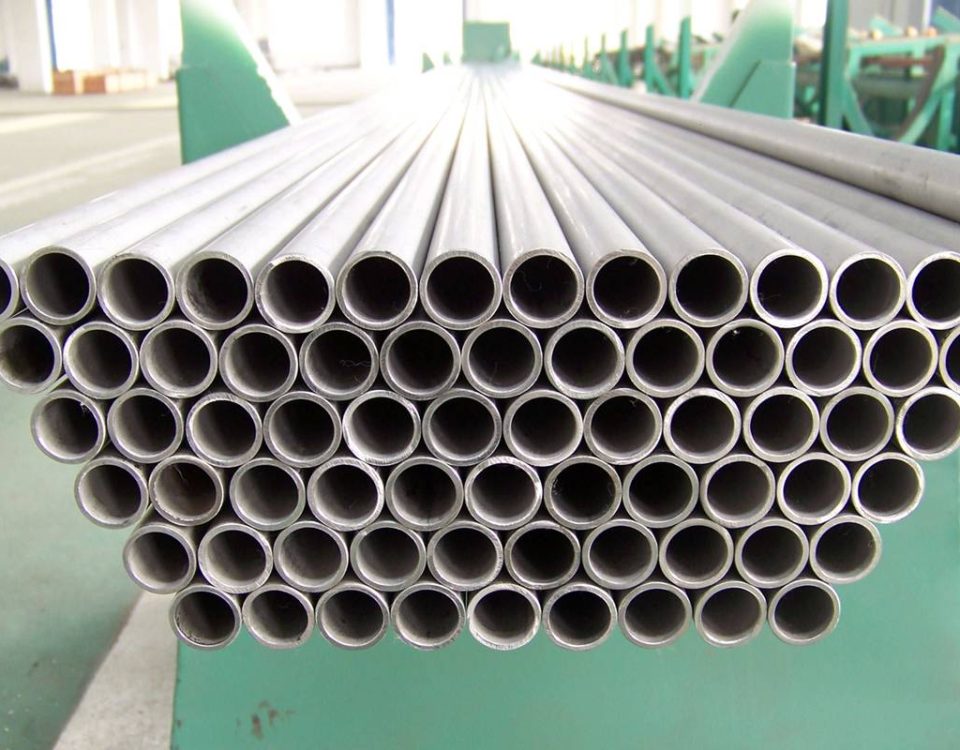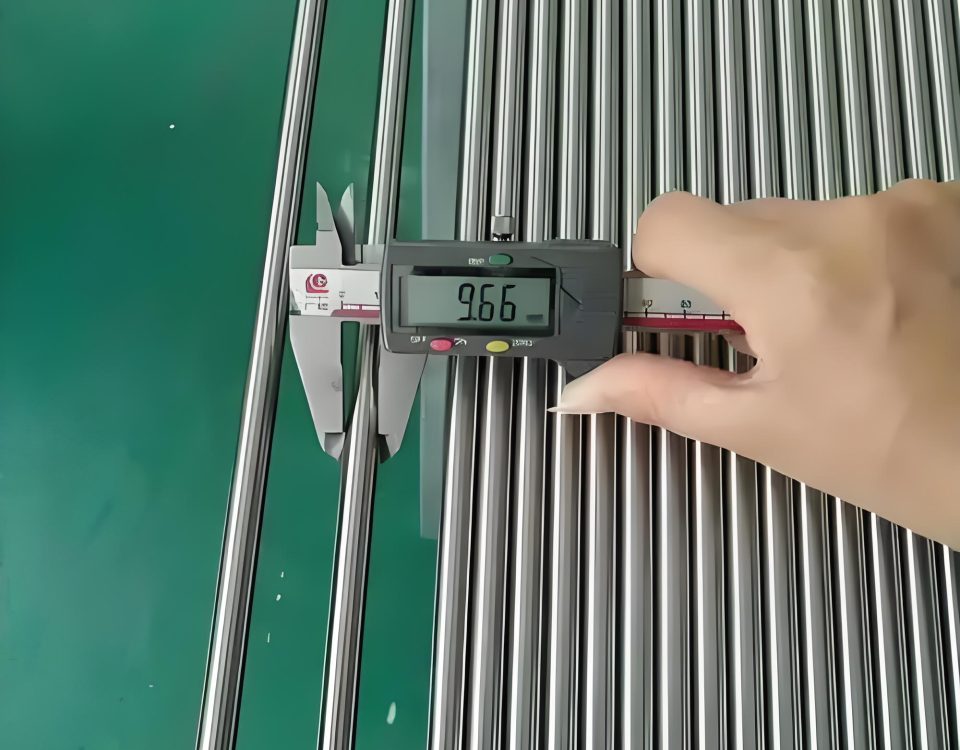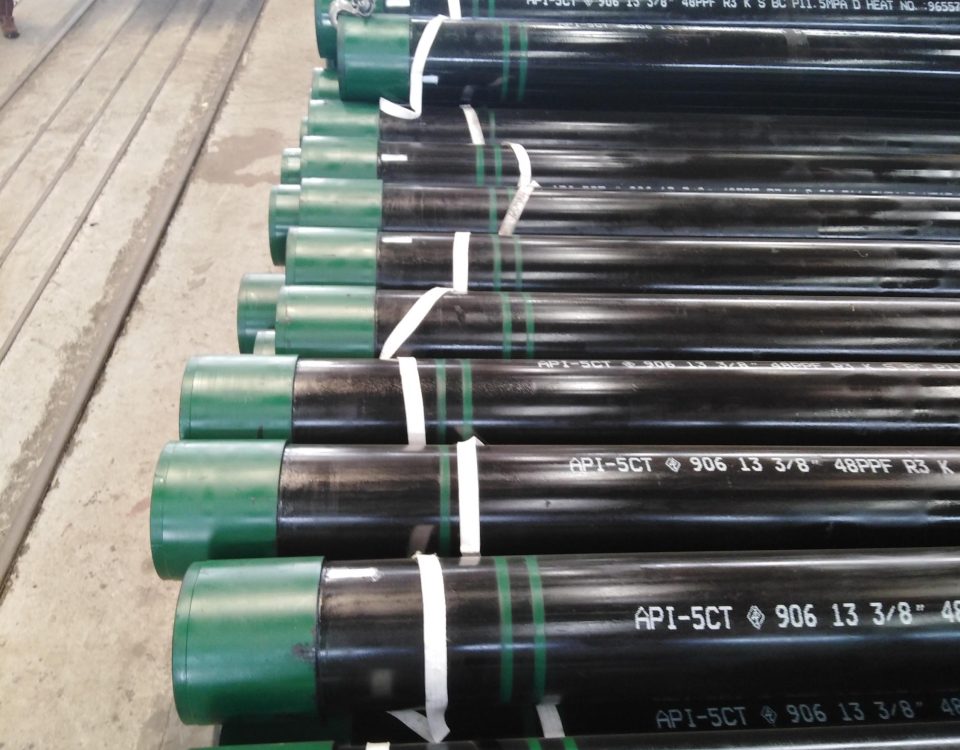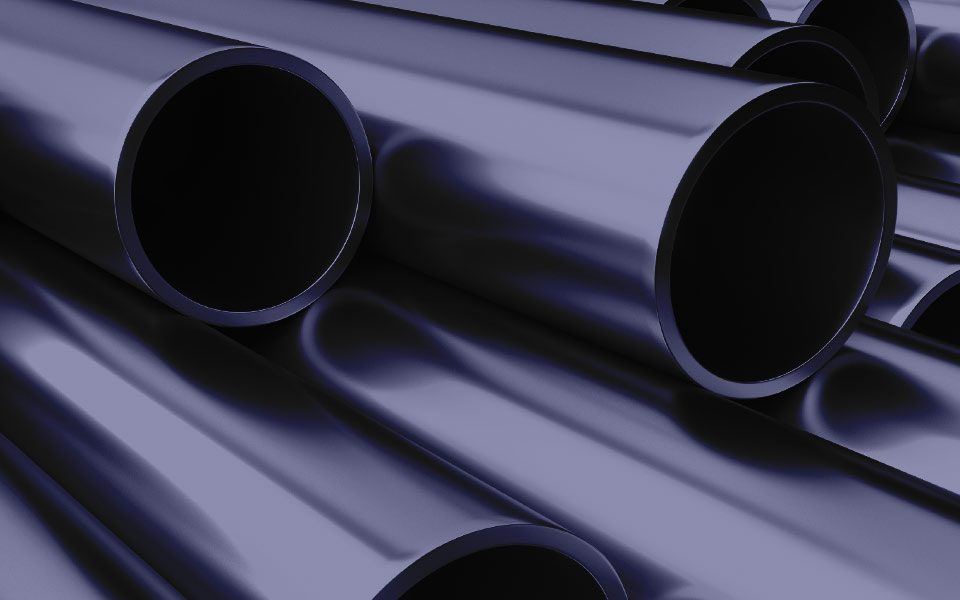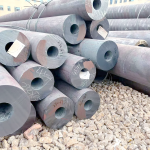
Heavy Wall Steel Pipe – Grade ST37 15Mo3 C45 steel Material
October 14, 2025The Unseen Integrity: Technical Measures for Welding and Corrosion Protection of X70 Steel Pipelines
The modern transmission pipeline, an artery of global energy supply, demands a structural integrity that is nothing short of absolute. At the heart of this infrastructure is the choice of material, and for high-pressure, long-distance transport of oil and natural gas, **API 5L Grade X70 steel** is a workhorse—a high-strength, low-alloy (HSLA) material offering an optimal blend of strength, toughness, and economy. Yet, the very characteristics that make X70 indispensable—its high strength and low carbon equivalent ($\text{CE}$) chemistry—present profound and interwoven technical challenges, particularly in the twin disciplines of **welding** and **corrosion protection**. The successful deployment of an X70 pipeline is a testament to the mastery of these technical measures, ensuring that the finished line remains structurally sound under immense pressure and chemically impervious to the relentless assault of its environment for a design life often exceeding 50 years.
To view the X70 pipeline project is to understand a continuous battle against entropy. Welding seeks to create a seamless, monolithic structure by joining individual pipe sections, ensuring the weld metal and heat-affected zone ($\text{HAZ}$) are equally as strong and tough as the parent metal. Simultaneously, corrosion protection measures must flawlessly shield every square meter of the external surface, and often the internal surface, from the electrochemical process of decay. Failure in either domain—a hydrogen-induced cold crack in the weld, or a small holiday in the protective coating—can lead to catastrophic failure, rendering the entire system compromised. Our discussion must delve into the specific, highly technical procedures mandated to overcome these challenges, recognizing that the integrity of the whole rests on the perfection of its smallest, unseen details.
I. The Metallurgical Foundation: X70 Steel and the Welding Challenge
The technical measures for welding X70 steel are rooted in its intricate metallurgy. X70 steel achieves its high yield strength ($483 \text{ MPa}$ minimum) not through a high carbon content (which would make it brittle and unweldable), but through a controlled rolling (CR) or thermo-mechanical controlled process ($\text{TMCP}$) combined with micro-alloying elements like Niobium ($\text{Nb}$), Vanadium ($\text{V}$), and Titanium ($\text{Ti}$). These micro-alloy additions refine the grain structure and enable precipitation hardening, delivering the required strength while maintaining a remarkably low carbon equivalent ($\text{CE}$) of typically $0.38$ to $0.43$. This low $\text{CE}$ is a deliberate engineering compromise—it enhances weldability but makes the material highly sensitive to the residual stresses and hydrogen embrittlement inherent in the welding process.
Hydrogen and Cold Cracking Mitigation
The paramount welding challenge in X70 is the mitigation of **hydrogen-assisted cracking (cold cracking)**. This mechanism occurs when four conditions are simultaneously met: residual tensile stress, susceptible microstructure (the $\text{HAZ}$ of HSLA steel is susceptible to forming hard martensitic structures), a temperature below $300^\circ\text{C}$, and the presence of **diffusible hydrogen**. Hydrogen is introduced primarily from moisture in the flux, electrodes, or welding atmosphere.
The technical measures employed to neutralize this threat are layered and mandatory:
- **Preheating (Preheat Temperature, $\text{T}_{p}$):** Before welding commences, the pipe ends must be heated to a specific temperature (often $75^\circ\text{C}$ to $150^\circ\text{C}$, depending on thickness and $\text{CE}$). Preheating is the single most effective measure, as it slows the cooling rate of the weld and $\text{HAZ}$, allowing hydrogen more time to diffuse out of the joint and preventing the formation of susceptible microstructures.
- **Low-Hydrogen Consumables:** All welding electrodes and flux must be ultra-low hydrogen types, rigorously controlled, baked, and stored in heated ovens right up to the point of use to maintain hydrogen levels below the critical threshold (e.g., $4 \text{ mL} / 100 \text{ g}$ of deposited metal).
- **Interpass Temperature Control ($\text{T}_{i}$):** The temperature between successive weld passes must be maintained within a specified range. If $\text{T}_{i}$ is too low, the risk of cold cracking increases; if it is too high, it can degrade the beneficial $\text{TMCP}$ microstructure of the parent metal.
| Parameter | Technical Requirement / Typical Range | Rationale |
|---|---|---|
| Minimum Yield Strength ($\sigma_{y}$) | $483 \text{ MPa}$ ($\text{70 ksi}$) | Pressure containment and material efficiency |
| Carbon Equivalent ($\text{CE}$) | $0.38 – 0.43$ (Typical) | Balance of strength and weldability |
| Preheat Temperature ($\text{T}_{p}$) | $75^\circ\text{C} – 150^\circ\text{C}$ (Minimum) | Mitigation of hydrogen cold cracking risk |
| Heat Input Control ($\text{HI}$) | $1.0 – 2.5 \text{ kJ/mm}$ (Critical Range) | Preservation of parent metal $\text{HAZ}$ toughness |
| Weld Metal Toughness ($\text{CVN}$) | $100 \text{ J}$ at $0^\circ\text{C}$ (Common) | Arrest brittle fracture propagation |
II. Advanced Welding Processes for Pipeline Construction
The speed and quality demands of modern pipeline construction necessitate the almost exclusive use of high-efficiency, mechanized or automated welding techniques. The choice of process is itself a critical technical measure, carefully selected for specific weld passes and operational environments.
Automatic and Semi-Automatic Welding
The standard technical measure involves the integration of multiple processes across the weld bevel:
- **Root Pass (Inner Weld):** This first pass is the most critical for structural integrity and internal profile. It is typically performed using semi-automatic or fully automatic **Gas Metal Arc Welding (GMAW)** or the highly controlled **GMAW-P (Pulsed)** variant. The process offers low hydrogen content, deep penetration, and excellent control over bead profile, which is essential for non-destructive testing ($\text{NDT}$) reliability.
- **Hot Pass:** Immediately following the root pass, the hot pass refines the root weld, burns out any small defects (like lack of fusion), and introduces heat to further drive out hydrogen, acting as an implicit $\text{PWHT}$ (post-weld heat treatment) for the root.
- **Fill and Cap Passes:** The bulk of the weld is completed using **Flux-Cored Arc Welding (FCAW)** or high-deposition-rate $\text{GMAW}$. $\text{FCAW}$ provides the required high deposition rate for thick-walled X70 pipe while its specialized flux ensures the required alloying elements (e.g., $\text{Ni}$ for toughness) are added to the weld metal, guaranteeing the required toughness and strength match to the X70 base metal.
The overall **Heat Input ($\text{HI}$)** must be tightly controlled. Excessive heat input can coarsen the grain structure of the $\text{HAZ}$, drastically reducing its fracture toughness (measured by Charpy V-Notch, $\text{CVN}$). Conversely, too low an $\text{HI}$ can lead to rapid cooling and the formation of brittle phases. Technical specifications define a narrow window of acceptable heat input ($\text{e.g., } 1.0 – 2.5 \text{ kJ/mm}$) to optimize the final weld metallurgy.
Non-Destructive Testing ($\text{NDT}$)
Every single girth weld in an X70 pipeline is a high-stakes component, demanding $100\%$ verification of integrity. The primary technical measure for inspection is **Automated Ultrasonic Testing (AUT)**. $\text{AUT}$ provides a volumetric examination of the weld, detecting planar defects (cracks, lack of fusion) with high reliability, speed, and precision. It has largely replaced film radiography for high-specification pipelines due to its superior ability to characterize critical, orientation-dependent defects. Weld procedure specifications ($\text{WPS}$) must be validated to ensure the resulting weld profile is amenable to reliable $\text{AUT}$ inspection.
| Weld Pass | Process / Technical Measure | Objective |
|---|---|---|
| Root Pass | Automatic $\text{GMAW-P}$ / Semi-Auto $\text{GMAW}$ | Achieve $100\%$ penetration and smooth internal bead profile |
| Fill Passes | Automatic $\text{FCAW}$ or High-Deposition $\text{GMAW}$ | Maintain heat input limits; match strength and toughness of X70 |
| Interpass Cleaning | Mandatory grinding/brushing | Remove slag/oxide layers to prevent lack of fusion defects |
| Inspection ($\text{NDT}$) | $100\%$ Automated Ultrasonic Testing ($\text{AUT}$) | Volumetric examination for planar defects and lack of fusion |
| Repair Procedures | Strictly controlled $\text{WPS}$ (often $\text{PWHT}$ required) | Ensure repairs do not introduce residual stress or microstructural issues |
III. External Corrosion Protection: The Dual-Layer Defense
Once the pipeline is welded and fully inspected, the focus shifts to ensuring its longevity—a challenge addressed by a comprehensive **corrosion protection system**. This is not a single measure, but a sophisticated, dual-layer defense system: high-performance external coating combined with cathodic protection ($\text{CP}$). Failure of the coating necessitates the $\text{CP}$ system to take over, but for X70 pipelines, the coating must bear the primary long-term burden.
High-Performance Coating Systems
The technical specifications for external coatings are demanding, requiring high adhesion, flexibility, chemical resistance, and electrical resistivity. The most common technical measures used for X70 pipes, standardized under ISO 21809, are:
- **Fusion Bonded Epoxy ($\text{FBE}$):** A high-performance, single-layer thermoset polymer coating applied directly to the blasted steel surface. $\text{FBE}$ offers excellent adhesion, high temperature resistance (up to $110^\circ\text{C}$ for specialized variants), and superior resistance to cathodic disbondment—the process where $\text{CP}$ can weaken the coating bond. It is frequently used for internal pipeline coatings as well.
- **Three-Layer Polyethylene ($\text{3LPE}$) / Three-Layer Polypropylene ($\text{3LPP}$):** This system is the gold standard for mechanical protection. It consists of three layers: 1) A thin $\text{FBE}$ layer for primary corrosion protection and adhesion; 2) A copolymer adhesive layer; 3) A thick, extruded polyethylene ($\text{3LPE}$) or polypropylene ($\text{3LPP}$) outer jacket for outstanding mechanical and impact resistance during handling and burial. $\text{3LPE}$ is specified for ambient to moderate temperatures; $\text{3LPP}$ is utilized for high-temperature service (up to $140^\circ\text{C}$).
A critical technical measure is the inspection of the coating for **”holidays”** (pinholes or small bare spots) using a high-voltage electrical holiday detector. Even microscopic holidays must be located and repaired before the pipe is buried, as they represent immediate sites for localized corrosion and pitting.
| Coating System | Typical Thickness | Operating Temperature (Max) | Key Advantage |
|---|---|---|---|
| Fusion Bonded Epoxy ($\text{FBE}$) | $250 – 450 \text{ microns}$ | $110^\circ\text{C}$ | Excellent adhesion, high temperature resistance, low cathodic disbondment. |
| Three-Layer Polyethylene ($\text{3LPE}$) | $2.5 – 3.5 \text{ mm}$ | $80^\circ\text{C}$ | Superior mechanical and impact resistance, widely used standard. |
| Three-Layer Polypropylene ($\text{3LPP}$) | $2.5 – 3.5 \text{ mm}$ | $140^\circ\text{C}$ | High mechanical strength for high temperature/abrasive service. |
| Field Joint Coating | Heat Shrink Sleeves ($\text{HSS}$) or Liquid Epoxy | Must match performance of main coating | Ensure $100\%$ continuity of protection system at girth welds. |
IV. Cathodic Protection ($\text{CP}$): The Electrochemical Guardian
The $\text{CP}$ system is the necessary second line of defense, designed to electrically suppress corrosion at any point where the external coating fails (a holiday) or where potential damage occurs during burial. This technical measure works by converting all anodic (corroding) sites on the steel surface to cathodic (protected) sites.
Protection Criteria and System Types
The fundamental technical criteria for successful $\text{CP}$ is achieving a minimum potential difference between the steel and the surrounding electrolyte (soil/water). The accepted standard requires the pipe-to-soil potential to be maintained at or below **$-850 \text{ mV}$** relative to a copper/copper sulfate reference electrode ($\text{Cu/CuSO}_4$).
Two primary $\text{CP}$ system types are utilized for X70 pipelines:
- **Impressed Current Cathodic Protection ($\text{ICCP}$):** Used for long-distance, high-current demand pipelines. $\text{ICCP}$ utilizes an external power source (rectifier) and buried anodes (often deep wells of silicon-iron or mixed metal oxide) to force a protective current onto the pipe surface. This system requires constant monitoring and adjustment but can protect vast stretches of pipe.
- **Sacrificial Anode Cathodic Protection ($\text{SACP}$):** Used for localized protection (e.g., at pipeline crossings, valve stations) or smaller distribution lines. $\text{SACP}$ utilizes anodes (typically Magnesium or Zinc) that are more electrochemically active than the X70 steel. The anode naturally corrodes (sacrifices itself), delivering a protective current to the pipeline.
The technical measure of integrating $\text{CP}$ requires the installation of test posts at regular intervals (typically $1 \text{ km}$ to $3 \text{ km}$) along the right-of-way. These posts allow field technicians to periodically measure the pipe-to-soil potential, ensuring the $-850 \text{ mV}$ protection criterion is maintained throughout the pipeline’s design life.
V. The Synergy of Integrity: Addressing Weld-Coating Interaction
The most complex technical challenge lies at the intersection of welding and corrosion protection: the **field joint (girth weld) coating**. The pipeline is coated at a factory (mill-applied coating), leaving a bare strip of steel (the cut-back) at each end for welding on-site. Once the weld is completed, this critical area must be coated to match the performance of the mill-applied coating—a process often hindered by the residual heat of the fresh weld.
Field Joint Coating Specifications
Technical specifications demand the use of specialized field joint coatings, typically **Heat Shrink Sleeves ($\text{HSS}$)** or **Liquid Epoxy (LE)** systems. $\text{HSS}$ are polymer sleeves that, upon heating, shrink tightly around the joint, integrating an adhesive that bonds to both the bare steel and the mill-applied coating, creating a continuous seal. $\text{LE}$ systems are often two-part epoxies applied by hand but formulated to be fast-curing and tolerant of the residual heat left in the steel from the last weld pass.
Failure of the field joint coating is the number one cause of pipeline corrosion failure because it is the most handled, most stressed, and most likely area to be imperfectly cleaned or cured. The technical measure requires meticulous surface preparation (often abrasive blasting to $\text{Sa} 2.5$), strict temperature monitoring, and a final holiday inspection of every single field joint before the pipe is lowered into the trench. The integrity of these thousands of joints is the measure of the overall system’s expected lifespan.
| CP Parameter | Technical Criterion | System Type |
|---|---|---|
| Protection Potential (Min.) | $-850 \text{ mV}$ (Cu/CuSO4 reference) | ICCP or SACP |
| Inspection Frequency | Minimum monthly/quarterly (ICCP), Annually (SACP) | Pipe-to-Soil Potential Measurement |
| Coating Inspection | $100\%$ Holiday Detection (High Voltage) | Before burial, verifies coating integrity |
| External Stress Corrosion Cracking ($\text{SCC}$) | Potential monitoring ($> -1100 \text{ mV}$ limit) | Ensures $\text{CP}$ does not create over-protection risk |
VI. Environmental and Safety Technical Measures
Beyond material integrity, the technical specifications must extend into the crucial domains of safety and environmental protection, particularly given the large scale of X70 pipeline projects.
Welding Safety and Environmental Compliance
The technical measures include strict adherence to safety protocols for the use of high-voltage automated equipment, handling of pressurized shielding gases, and management of welding fumes. Environmental $\text{WPS}$ often mandate processes that minimize fume and splatter. The disposal of waste welding consumables and the management of spent abrasive grit from surface preparation must conform to local environmental regulations.
Final Commissioning and Data Integrity
The ultimate technical measure of the completed pipeline is the **Hydrostatic Test**. The line is filled with water and pressurized to $1.25$ to $1.5$ times the maximum allowable operating pressure ($\text{MAOP}$) and held for a specified duration (e.g., $8$ hours or $24$ hours). This test physically verifies the combined integrity of the X70 steel, the millions of girth welds, and the entire system under stresses higher than it will ever experience in service. All welding data, $\text{NDT}$ reports, coating inspection records, and $\text{CP}$ commissioning potentials are archived, forming a permanent “integrity record” for the pipeline’s operational life—a record that is itself a critical technical measure for future maintenance and risk assessment.
VII. Conclusion: The Unseen Battle for Lifespan
The construction of an X70 steel pipeline is a sophisticated industrial feat, a controlled battle against failure governed by an exacting set of technical measures. The welding procedures must master the delicate metallurgy of HSLA steel, overcoming the threat of hydrogen cracking and ensuring that the final weld metal retains the extreme toughness required to arrest potential fractures. Simultaneously, the dual shield of high-performance polymer coatings and active cathodic protection must be installed with flawless precision, guaranteeing the pipe remains corrosion-free for its design life. The synergy between these disciplines—where the heat of the welding process dictates the subsequent coating method, and the integrity of the coating determines the demands on the $\text{CP}$ system—defines the overall success. The X70 pipeline is a testament to the engineering philosophy that structural integrity and long-term durability are not desirable traits but absolute, non-negotiable requirements, codified and enforced through technical specifications.

